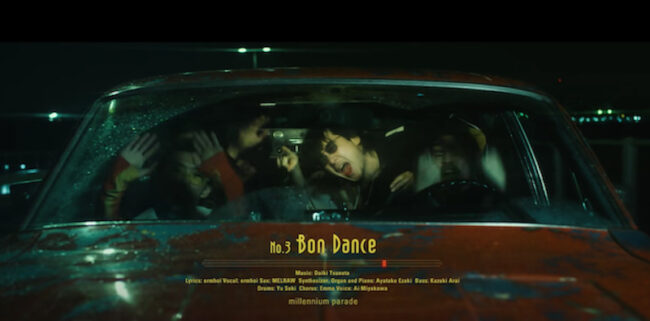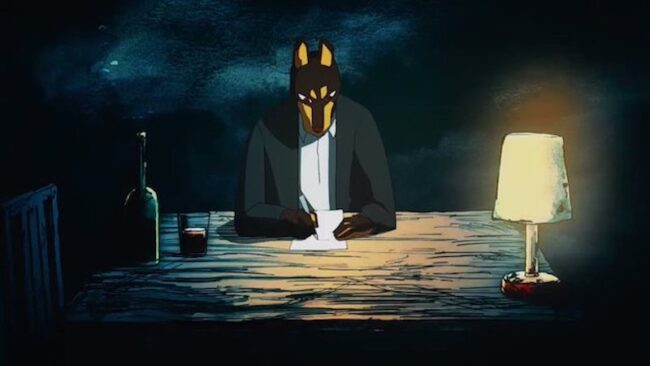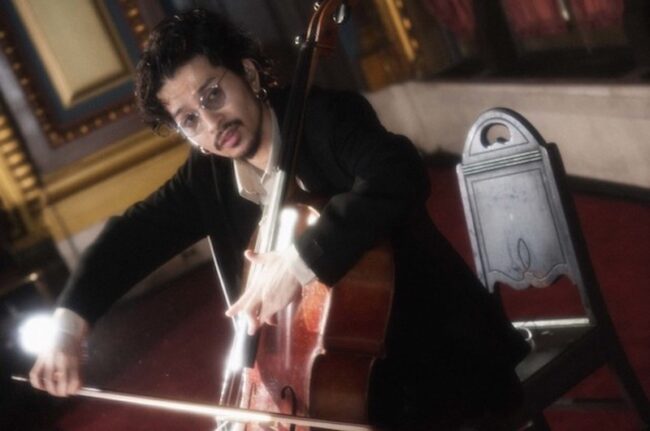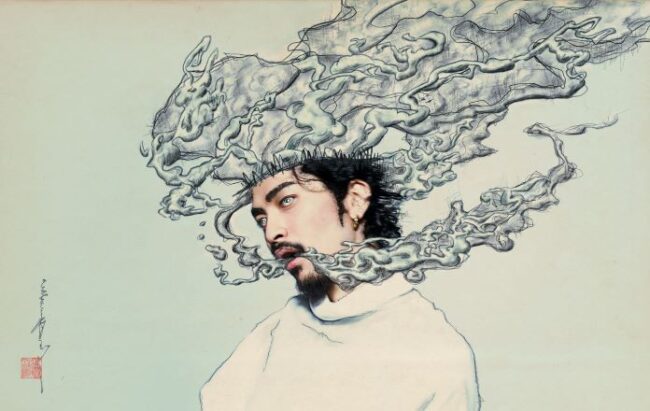The Japanese creative collective millennium parade released their debut album, THE MILLENNIUM PARADE, on Spotify and Apple Music on February 10th, 2021.
THE MILLENNIUM PARADE, which is a dynamic collaboration of art, animation, and music, is based on the Japanese concept known as Hyakki Yagyo. Hyakki Yagyo refers to an uncontrolled procession of Japanese spirits known as oni and yokai, but is more commonly used to refer to general pandemonium.
After listening to the songs, pandemonium is the perfect way to describe this album. Even the teaser trailer for the album clearly reflects the chaos suggested by Hyakki Yagyo. The video, which gives a sneak peek of every song in the album, features different colored lights, erratic driving in a dinged-up car covered in glitter, flashy transitions, and carefree dancing from all contributing artists. Collectively, the album works as a beautiful audio-visual unit, but it’s glaringly clear after listening to each song that there’s influence from multiple genres.

A perfect example is the song “Fly with me,” which was featured in the Netflix show “Ghost in the Shell: SAC_2045.” “Fly with me” is performed like a rap song, but if you listen to background noise, it features jazz tunes played by brass instruments. Layered between rap and jazz are hints of electronic music. This ties the song seamlessly into the music video, which depicts an incredibly technologically advanced universe exploding with bright neon colors and lights. Not a single element of animation was overlooked, and the detail is astounding. Overall, the song and its music video were an electrifying experience that still makes me feel powerful enough to take on an army of robots with my nonexistent computer science skills.
Another example is the song “Familia.” “Familia” is notably somber, especially in comparison to the rest of the album, but features many of the same influences. The lyrics are performed through singing rather than rapping, and the music features pianos, organs, and rock-style drums. The emotion is emphasized by the music video, which, unlike the others, is live-action. The music video is a sequence of powerfully grief-filled scenes, such as a family carrying a funeral casket, a man being consumed by smoke, a father hugging his daughter and reflecting upon her childhood, and the daughter looking out at the expansive ocean after her father has passed away. Altogether, it was heart-wrenching, but in such a breathtaking way.

The final song is one that I don’t think I’ll ever forget: “Philip.” While it’s probably the most eccentric song and music video combination, “Philip” made it clear to me why the millennium parade is referred to as a “creative collective” instead of a band. The song itself cannot be pinned to any particular genre. Parts of it sound like rap, parts are more electronic, but overall the song is unlike anything I’ve ever seen or heard before. The lyrics, rather than standing out above the music, weave into it like some kind of perfect sonic quilt. The animation style of the music video is dynamic, detailed, and has a quality about it where certain elements look freshly drawn and other parts look old and worn. It’s cinematic and dynamic, and tells an incredible story. The story takes place in a society of humanoid dogs and tells a violent, yet thrilling story of love and betrayal. It’s stunning, provocative, and incredibly difficult to forget.

But, why does millennium parade draw influence from so many different genres? What motivated them to create such intriguing never-before-heard music and never-before-seen images? It all goes back to the founder of the band, Japanese artist Daiki Tsuneta.
The influence of rock in THE MILLENNIUM PARADE comes from Tsuneta’s official claim to fame: his alternative rock band, King Gnu. The jazz influence is a tribute to Tsuneta’s father, who was a jazz pianist. The orchestral elements are a reflection of Tsuneta’s background as a cellist. Prior to his rock career, Tsuneta studied the cello under famed conductor Seiji Ozawa at Ozawa International Chamber Music Academy, and for a time, played cello professionally.

By tying these elements of Tsuneta’s life together, millennium parade fulfilled their ultimate goal: to create music that stood in direct contrast to the growing world of Japanese Pop, or J-Pop
Over the last couple of decades, J-Pop has become very mainstream in Japan, drawing influences from many 1960s American pop bands such as The Beatles and The Beach Boys. In an interview with The Japan Times, Tsuneta criticizes J-Pop, saying, “It’s often not about the beats, or even the actual sounds of the music. Rather, it’s more concerned with the melody, or the lyrics.” By creating songs with short, repetitive lyrics, nearly masked by the interplay of multiple genres, Tsuneta flips the world’s view of what Japanese music should be on its head.
To listen to “THE MILLENNIUM PARADE,” search for it on Spotify and Apple Music, or view the music videos for free on YouTube.









